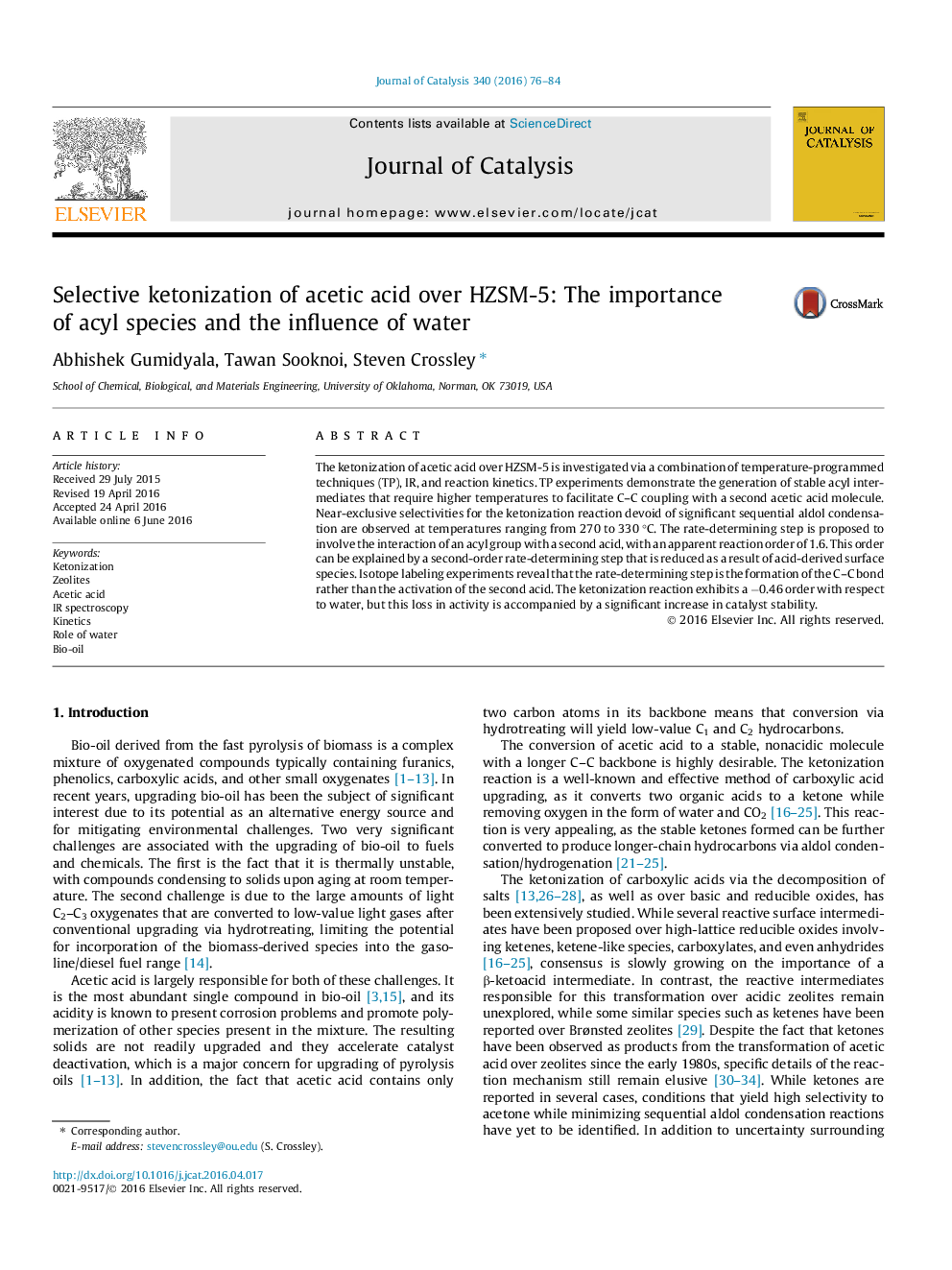| Article ID | Journal | Published Year | Pages | File Type |
|---|---|---|---|---|
| 60510 | Journal of Catalysis | 2016 | 9 Pages |
•We investigate the reaction mechanism of acetic acid ketonization over zeolites.•A second-order coupling rate-determining step is observed.•Isotope labeling experiments reveal that the rate-determining step is C–C coupling.•Acyl species are key intermediates in this reaction.•Water competes for adsorption sites but significantly improves catalyst stability.
The ketonization of acetic acid over HZSM-5 is investigated via a combination of temperature-programmed techniques (TP), IR, and reaction kinetics. TP experiments demonstrate the generation of stable acyl intermediates that require higher temperatures to facilitate C–C coupling with a second acetic acid molecule. Near-exclusive selectivities for the ketonization reaction devoid of significant sequential aldol condensation are observed at temperatures ranging from 270 to 330 °C. The rate-determining step is proposed to involve the interaction of an acyl group with a second acid, with an apparent reaction order of 1.6. This order can be explained by a second-order rate-determining step that is reduced as a result of acid-derived surface species. Isotope labeling experiments reveal that the rate-determining step is the formation of the C–C bond rather than the activation of the second acid. The ketonization reaction exhibits a −0.46 order with respect to water, but this loss in activity is accompanied by a significant increase in catalyst stability.
Graphical abstractFigure optionsDownload full-size imageDownload high-quality image (93 K)Download as PowerPoint slide
